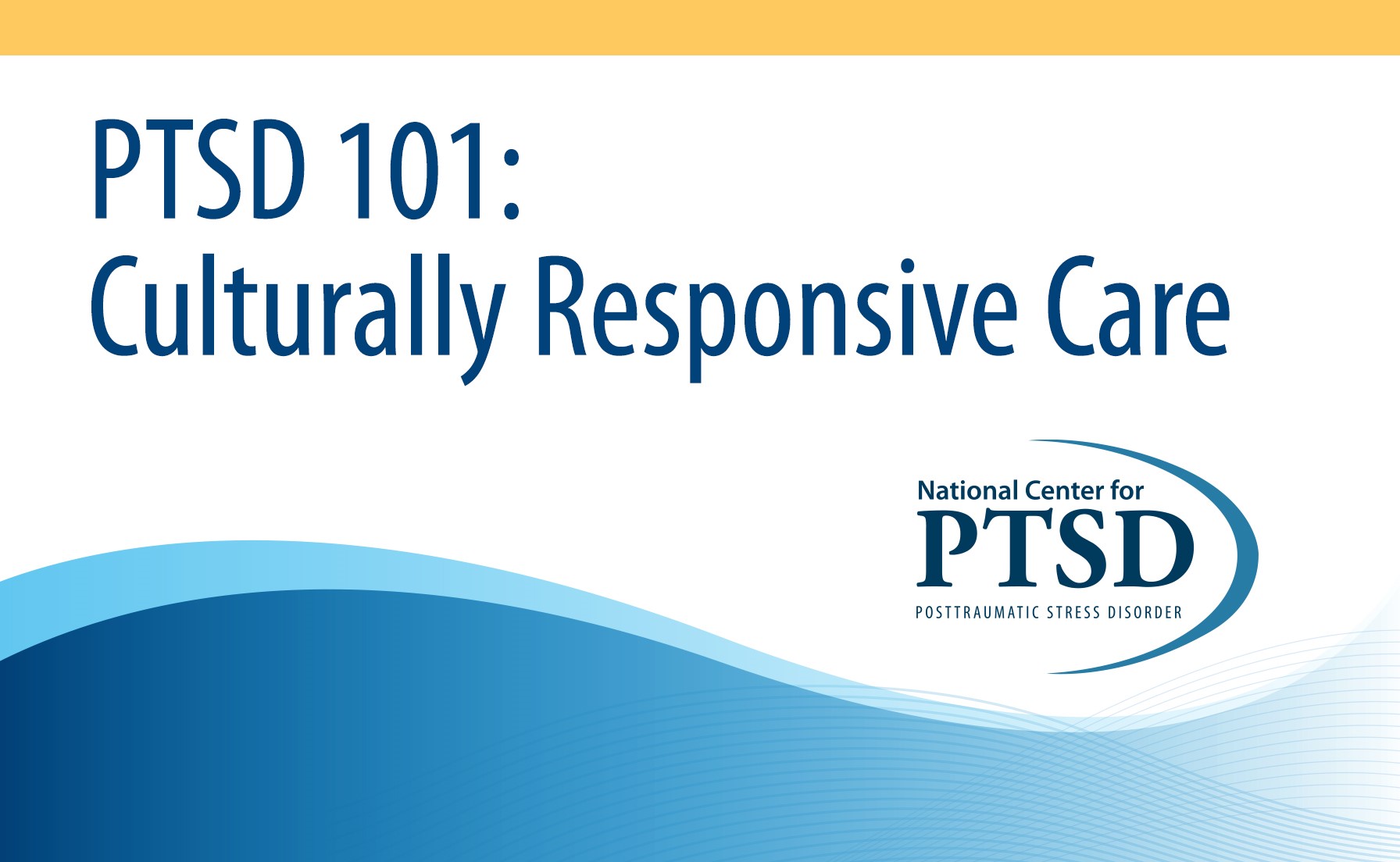PTSD: National Center for PTSD
PTSD for Children 6 Years and Younger
PTSD for Children 6 Years and Younger
A challenge for the Diagnostic and Statistical Manual (DSM) taxonomy has always been to consider developmental differences in the expressions of disorders in different age groups.
Research has suggested that individuals of different ages may express features of the same criteria somewhat differently. Furthermore, there may be sufficient differences in the expressions of some disorders to justify an age-related subtype of the disorder. This is important to consider particularly in Posttraumatic Stress Disorder (PTSD) because, although PTSD has been widely reported in children and adolescents, the DSM-IV criteria were developed before substantial numbers of studies had been conducted on young children (1).
The Fifth Edition of the DSM (DSM-5) includes a new developmental subtype of PTSD called Posttraumatic Stress Disorder in preschool children. As the first developmental subtype of an existing disorder, this represents a significant step for the DSM taxonomy. Since an alternative diagnostic set of criteria was initially proposed by Michael Scheeringa and Charles Zeanah (2), the criteria have been refined empirically (3,4), and endorsed by a task force of experts on early childhood mental health (5). While the bulk of the empirical research that supports this disorder was conducted on three- to six-year-old preschool children, the studies often included one- to two-year-old toddlers. These studies showed that when a developmentally-sensitive set of criteria were used approximately three to eight times more children qualified for the diagnosis compared to the DSM-IV (3,6).
In This Article
What Types of Trauma Do Young Children Experience?
Young children are exposed to many types of traumatic experiences, placing them at risk for PTSD. These include:
- Abuse (7)
- Witnessing interpersonal violence (8)
- Motor vehicle accidents (9)
- Experiences of natural disasters (10)
- Conditions of war (11)
- Dog bites
- Invasive medical procedures (12)
How Is the Diagnosis Different in Preschool PTSD?
Because young children have emerging abstract cognitive and verbal expression capacities, research has shown that the criteria need to be more behaviorally anchored and developmentally sensitive to detect PTSD in preschool children (2,13).
Immediate reaction to traumatic event criterion
The criterion that the children's reactions at the time of the traumatic events showed extreme distress has been deleted. If children were too young to verbalize their acute reactions to traumatic experiences, and there were no adults present to witness their reactions, there was no feasible way to know about these reactions. This criterion, which has been shown to lack predictive validity for both adult (14) and preschool populations (6), has also been deleted for the regular PTSD criteria in DSM-5trouble sleeping,nightmares,symptoms of PTSD.
Intrusion symptoms
The change to the re-experiencing symptoms is a relatively minor change in wording to increase face validity and, thereby, lower the symptom detection threshold. The old symptom of "recurrent and intrusive distressing recollections of the event ..." required three conditions: (1) recurrent, (2) intrusive, and (3) distressing. Research showed empirically that preschool children do not always manifest overt distress with their intrusive, unwanted thoughts. Some children were neutral or "over bright" (2,13). While distressed reactions are common, parents also commonly reported no affect or what appeared to be excitement (6). Furthermore, there were no differences in PTSD severity for those with overtly distressing recollections compared to those who showed other emotions with their recollections.
Avoidance symptoms and negative alterations in cognitions and mood
Because many of the avoidance and negative cognition symptoms are highly internalized phenomena, the most significant changes in the criteria for preschool children are in this section.
The major change was to require only one symptom in either the avoidance symptoms or negative alterations in cognitions and mood, instead of the DSM-IV threshold of three symptoms. The number of these symptoms that are possible to detect is simply fewer compared to adults. The symptoms of "loss of interests," "restricted range of affect," "detachment from loved ones," and "avoidance of thoughts or feelings related to the trauma" manifest in young children but are consistently ranked as some of the least frequent among the PTSD symptoms (15). The symptoms of "sense of a foreshortened future" and "inability to recall an important aspect of the event" were deleted because of the developmental challenges in manifesting and/or detecting them.
The wording of two symptoms was modified to enhance face validity and symptom detection. Diminished interest in significant activities may manifest as constricted play. Feelings of detachment or estrangement may be manifest more behaviorally as social withdrawal.
Increased arousal symptoms
Being the most behavioral and observable types of symptoms, few changes seem to be needed for these problems. The symptoms "irritability or outbursts of anger" was modified to include "extreme temper tantrums" to enhance face validity.
Validation of Preschool PTSD
Evidence supports the criterion, convergent, discriminant, and predictive validities of the preschool PTSD criteria (reviewed in Scheeringa et al., 2011;6). Perhaps most convincingly, even when the threshold for the avoidance and numbing criterion was lowered from three symptoms to one symptom, the diagnosed cases were still highly symptomatic, with means of 6 to 10 symptoms across studies. Marked functional impairment across a range of domains has also been documented. Prospective longitudinal studies have also documented the longer-term stability of diagnoses and impairment over time (9,16,17).
Assessment and Treatment for Preschool PTSD
Standardized screening and assessment instruments have been developed for caregivers of this age group, with both self-administered checklists and diagnostic interviews (reviewed in 18).
Evidence-based treatments for PTSD, such as cognitive behavioral therapy, are effective (7,19,20). A long-term, relationally-based treatment has shown effectiveness following interpersonal violence (8). Play therapy, eye movement desensitization and reprocessing (EMDR), and other modalities may be effective if the traumatic memories can be engaged in developmentally-appropriate methods.
AUTHOR NOTE: Dr. Michael Scheeringa is the Remigio Gonzalez, MD Professor of Child Psychiatry, Tulane University School of Medicine, New Orleans, LA.
References
- Kilpatrick, D., Resnick, H., Freedy, J., Pelcovitz, D., Resick, P., Roth, S., & van der Kolk, B. (1998). Posttraumatic Stress Disorder Field Trial: Evaluation of the PTSD construct - criteria A through E. In T. Widiger, A. Frances, H. Pincus, R. Ross, M. First, W. Davis & M. Kline (Eds.), DSM-IV Sourcebook (Vol. 4, pp. 803-844). Washington, DC: American Psychiatric Association.
- Scheeringa, M. S., Zeanah, C. H., Drell, M. J., & Larrieu, J. A. (1995). Two approaches to the diagnosis of posttraumatic stress disorder in infancy and early childhood. Journal of the American Academy of Child and Adolescent Psychiatry, 34 (2), 191-200. doi: 10.1097/00004583-199502000-00014
- Scheeringa, M. S., Myers, L., Putnam, F. W., & Zeanah, C. H. (2012). Diagnosing PTSD in early childhood: an empirical assessment of four approaches. Journal of Traumatic Stress, 25 (4), 359-367.
- Scheeringa, M. S., Zeanah, C. H., Myers, L., & Putnam, F. W. (2003). New findings on alternative criteria for PTSD in preschool children. Journal of the American Academy of Child and Adolescent Psychiatry, 42 (5), 561-570. doi: 10.1097/01.CHI.0000046822.95464.14.
- Task Force on Research Diagnostic Criteria: Infancy and Preschool. (2003). Research diagnostic criteria for infants and preschool children: The process and empirical support. Journal of the American Academy of Child and Adolescent Psychiatry, 42, 1504-1512.
- Scheeringa, M. S., Zeanah, C. H., & Cohen, J. A. (2011). PTSD in children and adolescents: Towards an empirically based algorithm. Depression and Anxiety, 28 (9), 770-782. 10.1002/da.20736.
- Cohen, J., & Mannarino, A. (1996). A treatment outcome study for sexually abused preschool children: Initial findings. Journal of the American Academy of Child and Adolescent Psychiatry, 35, 42-50.
- Lieberman, A., Ippen, C., & Van Horn, P. (2006). Child-parent psychotherapy: 6-month follow-up of a randomized controlled trial. Journal of the American Academy of Child and Adolescent Psychiatry, 45 (8), 913-918. doi: 10.1097/01.chi.0000222784.03735.92
- Meiser-Stedman, R., Smith, P., Glucksman, E., Yule, W., & Dalgleish, T. (2008). The posttraumatic stress disorder diagnosis in preschool- and elementary school-age children exposed to motor vehicle accidents. American Journal of Psychiatry, 165 (10), 1326-1337. doi: 10.1176/appi.ajp.2008.07081282
- Scheeringa, M. S., & Zeanah, C. H. (2008). Reconsideration of harm's way: Onsets and comorbidity patterns in preschool children and their caregivers following Hurricane Katrina. Journal of Clinical Child and Adolescent Psychology, 37 (3), 508-518.
- Laor, N., Wolmer, L., Mayes, L. C., Golomb, A., Silverberg, D. S., Weizman, R., & Cohen, D. J. (1996). Israeli preschoolers under Scud missile attacks. Archives of General Psychiatry, 53, 416-423.
- De Young, A. C., Kenardy, J. A., & Cobham, V. E. (2011). Diagnosis of posttraumatic stress disorder in preschool children. Journal of Clinical Child and Adolescent Psychology, 40 (3), 375-384. doi: 10.1080/15374416.2011.563474
- Scheeringa, M. S., Peebles, C. D., Cook, C. A., & Zeanah, C. H. (2001). Toward establishing procedural, criterion, and discriminant validity for PTSD in early childhood. Journal of the American Academy of Child and Adolescent Psychiatry, 40 (1), 52-60. doi: 10.1097/00004583-200101000-00016
- Friedman, M. J., Resick, P. A., Bryant, R. A., & Brewin, C. R. (2011). Considering PTSD for DSM-5. Depression and Anxiety, 28 (9), 750-769.
- Scheeringa, M. S. (2006). Posttraumatic stress disorder: Clinical guidelines and research findings. In J. L. Luby (Ed.), Handbook of Preschool Mental Health: Development, Disorders, and Treatment (pp. 165-185). New York: The Guilford Press.
- Ohmi, H., Kojima, S., Awai, Y., Kamata, S., Sasaki, K., Tanaka, Y., . . . Hata, A. (2002). Post-traumatic stress disorder in pre-school aged children after a gas explosion. European Journal of Pediatrics, 161, 643-648.
- Scheeringa, M., Zeanah, C., Myers, L., & Putnam, F. (2005). Predictive validity in a prospective follow-up of PTSD in preschool children. Journal of the American Academy of Child and Adolescent Psychiatry, 44 (9), 899-906. doi: 10.1097/01.chi.0000169013.81536.71
- De Young, A. C., Drury, S.S., Scheeringa, M.S. (in press). Assessing trauma-related symptoms during early childhood. In R Del Carmen-Wiggins, A Carter (Eds.), Handbook of Infant, Toddler, and Preschool Mental Health Assessment, 2nd edition. New York, NY: Oxford University Press.
- Deblinger, E., Stauffer, L., & Steer, R. (2001). Comparative efficacies of supportive and cognitive behavioral group therapies for young children who have been sexually abused and their nonoffending mothers. Child Maltreatment, 6, 332-343.
- Scheeringa, M. S., Weems, C. F., Cohen, J. A., Amaya-Jackson, L., & Guthrie, D. (2011). Trauma-focused cognitive-behavioral therapy for posttraumatic stress disorder in three through six year-old children: A randomized clinical trial. Journal of Child Psychology and Psychiatry, 52 (8), 853-860.
You May Also Be Interested In

PTSD 101: Culturally Responsive Care
Understand and develop the components of a culturally responsive case formulation.

PTSD 101: Prescribing for Older Veterans with PTSD
Learn best practices for pharmacological treatment for older Veterans with PTSD.
























